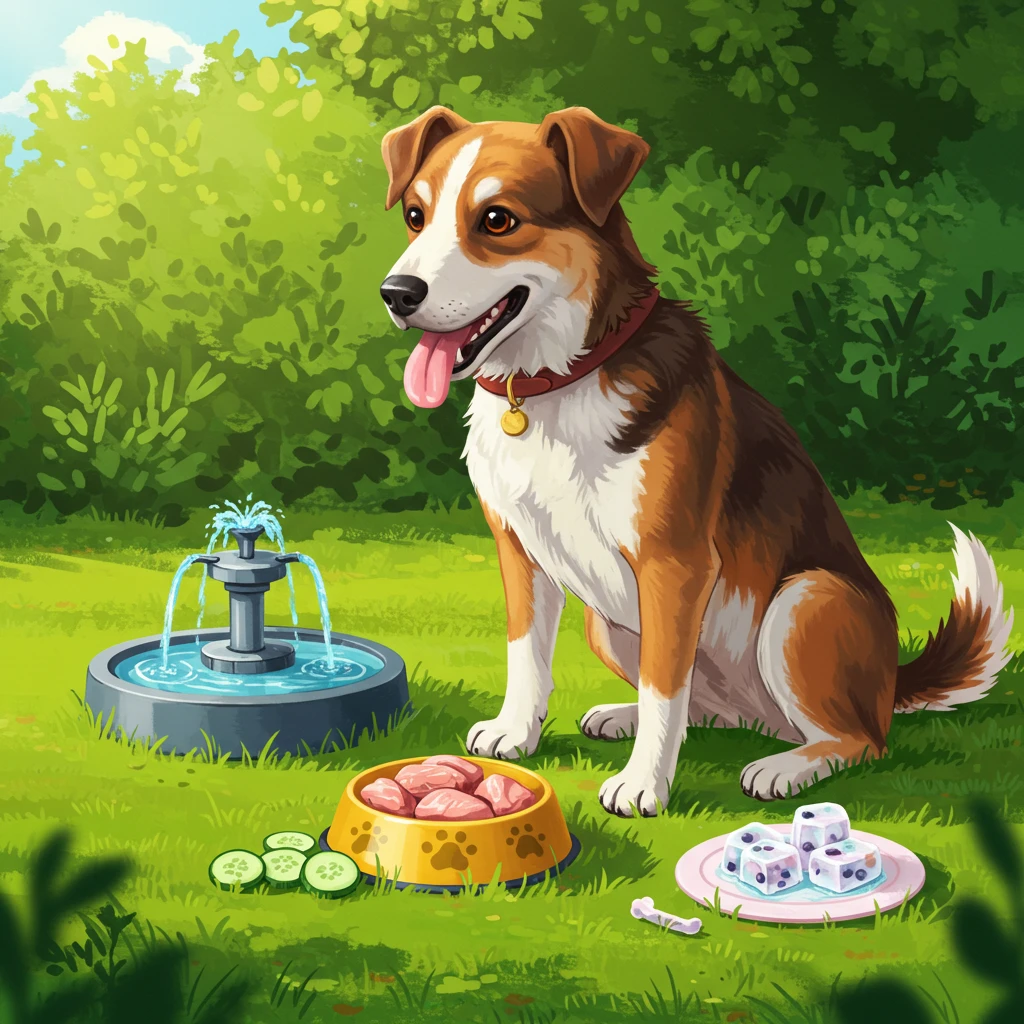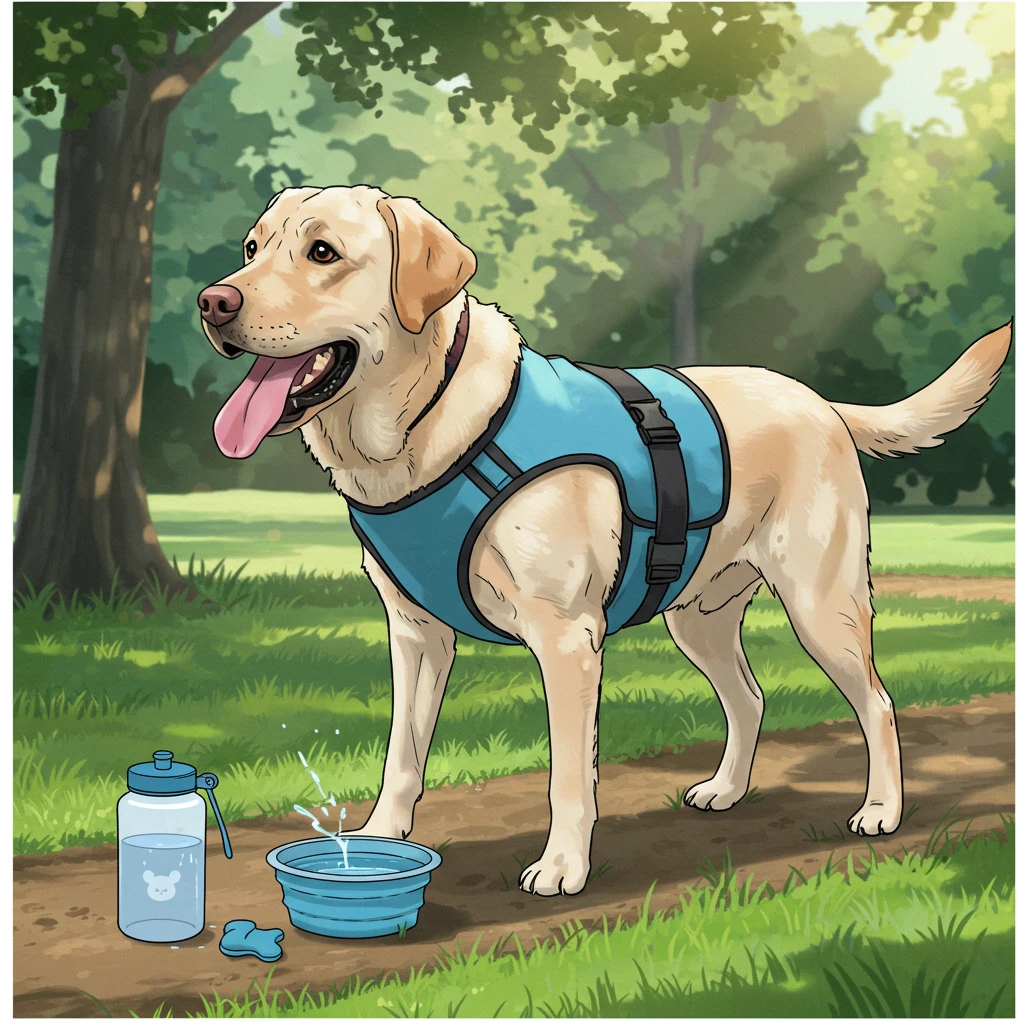As temperatures rise during the summer months, ensuring proper hydration for your dog becomes increasingly crucial. Just like humans, dogs are susceptible to the dangers of dehydration, which can lead to severe health issues if not addressed promptly. Understanding the importance of hydration for your dog can help you prevent these risks and maintain your pet’s overall health and well-being. This article delves into why hydration is vital for your dog during summer, explores practical examples, and provides actionable tips to keep your furry friend fully hydrated.
Understanding Canine Hydration Needs
The Physiology of Hydration in Dogs
Hydration is essential for various physiological processes in dogs, including regulating body temperature, maintaining joint health, facilitating digestion, and promoting a healthy coat. Dogs primarily regulate their body temperature through panting, a process that causes significant water loss. Unlike humans, dogs do not sweat through their skin, which makes them more susceptible to overheating and dehydration, especially in hot weather.
Signs of Dehydration in Dogs
Recognizing the signs of dehydration in dogs is crucial for prompt intervention. Common symptoms include excessive panting, dry nose and gums, lethargy, sunken eyes, and loss of skin elasticity. If your dog displays any of these signs, immediate action is necessary to prevent more severe health complications.
Concrete Examples and Use Cases
Summer Walks and Outdoor Activities
Consider a scenario where you’re taking your dog for a walk or engaging in outdoor activities during summer. Even a short walk can lead to dehydration if your dog doesn’t have access to water. Carrying a portable dog water bottle or collapsible bowl can ensure your pet stays hydrated during these outings. Frequent water breaks and providing shade can help mitigate the risks associated with high temperatures.
Hydration and Dog Breeds
Certain dog breeds are more prone to dehydration due to their physical characteristics. For instance, brachycephalic breeds like Bulldogs and Pugs have a harder time breathing efficiently, increasing their risk of overheating. Owners of such breeds should be particularly vigilant, offering water frequently and avoiding strenuous activities during peak heat hours.
Traveling with Dogs
Traveling with your dog during summer requires careful planning to ensure hydration. Whether you’re on a road trip or flying, always have fresh water available. Use travel-friendly water dispensers and schedule regular stops to allow your dog to drink and stretch. This proactive approach will keep your pet comfortable and reduce the risk of dehydration.
Key Points and Best Practices
-
Always Provide Access to Fresh Water: Ensure your dog has constant access to clean, fresh water, both indoors and outdoors. Regularly change the water to keep it cool and appealing.
-
Monitor Water Intake: Pay attention to how much water your dog drinks daily. Changes in their drinking habits can indicate health issues requiring a vet’s attention.
-
Incorporate Wet Foods: Including wet dog food in your pet’s diet can help increase their water intake. Wet food contains higher water content than dry kibble, providing an additional hydration source.
-
Use Electrolyte Solutions: In cases where dehydration is a concern, specially formulated pet electrolyte solutions can help replenish lost minerals and fluids.
-
Avoid Overexertion: Limit your dog’s physical activity during the hottest parts of the day. Early morning or late evening walks are ideal for avoiding excessive heat.
FAQ
1. How can I tell if my dog is dehydrated?
Signs of dehydration in dogs include excessive panting, dry nose and gums, lethargy, sunken eyes, and loss of skin elasticity. If you suspect dehydration, offer water immediately and consult a veterinarian if symptoms persist.
2. How much water should my dog drink daily?
A general guideline is that dogs should drink about one ounce of water per pound of body weight each day. However, this can vary depending on factors such as diet, activity level, and climate.
3. Can I use human electrolyte drinks for my dog?
It’s best to avoid giving your dog human electrolyte drinks as they may contain ingredients that are harmful to pets. Instead, opt for veterinary-approved electrolyte solutions designed for dogs.
4. Is it safe to give my dog ice cubes?
Yes, ice cubes can be a refreshing treat for dogs in moderation. They can also encourage hydration by adding them to your dog’s water bowl.
5. What should I do if my dog refuses to drink water?
If your dog refuses water, try offering ice cubes, adding a bit of low-sodium chicken broth to their water, or using a pet water fountain to make drinking more appealing. Persistent refusal to drink warrants a veterinary consultation.
Conclusion
Hydration is a critical component of canine health, especially during the summer months when the risk of dehydration increases. By understanding your dog’s hydration needs, recognizing the signs of dehydration, and implementing best practices to ensure adequate water intake, you can keep your furry friend healthy and happy. Remember, proactive measures not only prevent dehydration but also contribute to your dog’s overall well-being. For more detailed guidance on keeping your pet hydrated, consider consulting resources from veterinary professionals, such as the American Veterinary Medical Association.
By staying informed and attentive, you’ll be well-equipped to provide the best care for your dog during the summer heat.







